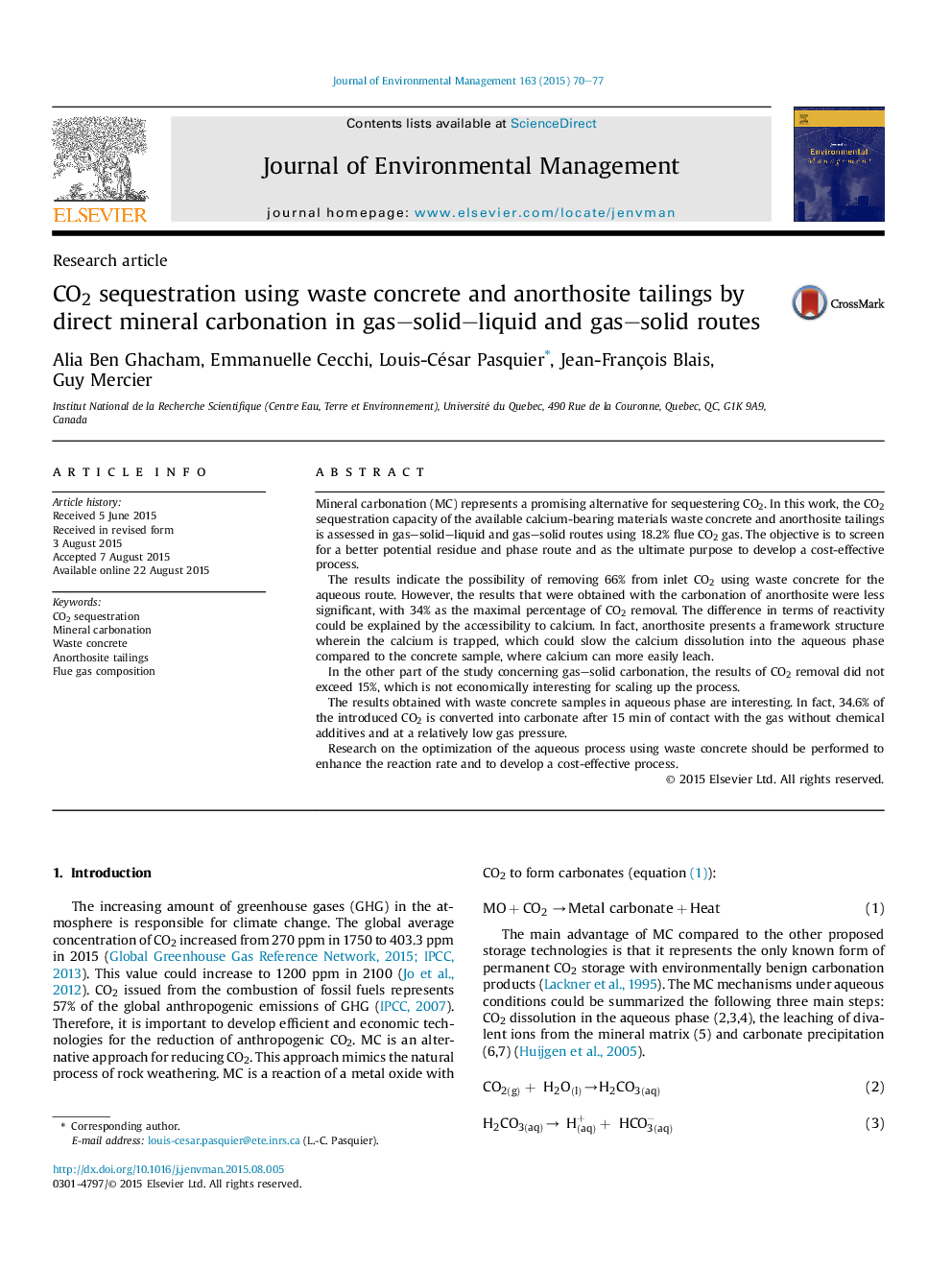| Article ID | Journal | Published Year | Pages | File Type |
|---|---|---|---|---|
| 1055514 | Journal of Environmental Management | 2015 | 8 Pages |
•Dry and aqueous flue gas mineral carbonation routes were investigated.•Two types of calcium-bearing residues were tested.•Dry phase experiments did not showed any carbonates formation.•Waste concrete is more reactive than anorthosite residues.•34.6% of CO2 was converted into carbonate with concrete samples in aqueous phase.
Mineral carbonation (MC) represents a promising alternative for sequestering CO2. In this work, the CO2 sequestration capacity of the available calcium-bearing materials waste concrete and anorthosite tailings is assessed in gas–solid–liquid and gas–solid routes using 18.2% flue CO2 gas. The objective is to screen for a better potential residue and phase route and as the ultimate purpose to develop a cost-effective process.The results indicate the possibility of removing 66% from inlet CO2 using waste concrete for the aqueous route. However, the results that were obtained with the carbonation of anorthosite were less significant, with 34% as the maximal percentage of CO2 removal. The difference in terms of reactivity could be explained by the accessibility to calcium. In fact, anorthosite presents a framework structure wherein the calcium is trapped, which could slow the calcium dissolution into the aqueous phase compared to the concrete sample, where calcium can more easily leach.In the other part of the study concerning gas–solid carbonation, the results of CO2 removal did not exceed 15%, which is not economically interesting for scaling up the process.The results obtained with waste concrete samples in aqueous phase are interesting. In fact, 34.6% of the introduced CO2 is converted into carbonate after 15 min of contact with the gas without chemical additives and at a relatively low gas pressure.Research on the optimization of the aqueous process using waste concrete should be performed to enhance the reaction rate and to develop a cost-effective process.
